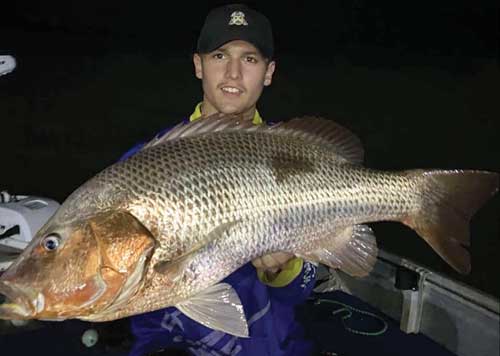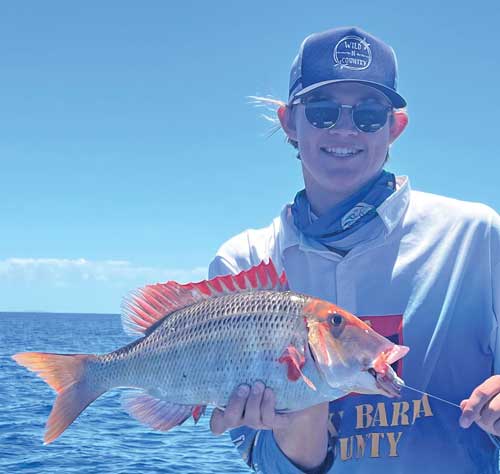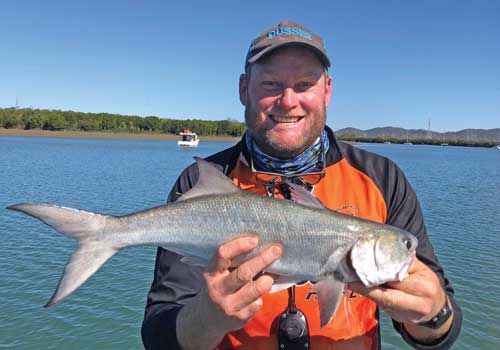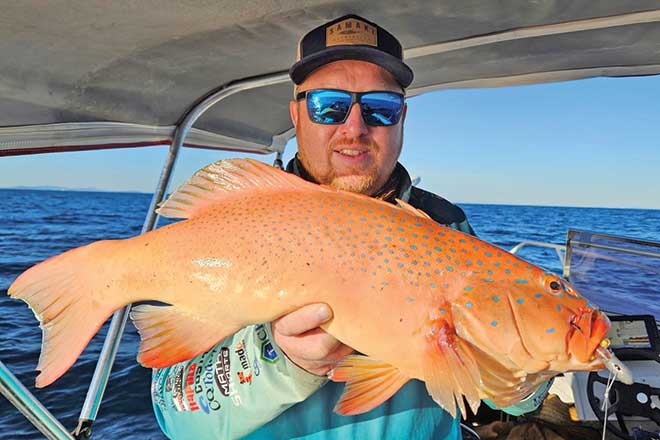We’re in the second month of winter and the temperature has dropped, bringing the water temperature down with it.
Now’s the time to be on the water chasing those winter fish such as blue salmon, bream, flathead and black jewfish.
Longer periods of little to no wind have allowed for more time on the water.
It might be hard to get up before the sun rises on a cold winter’s morning, but it can be worthwhile.
The days are still warm and usually, by morning tea, you’re back into shorts and a shirt for the rest of the day.
Fishing late afternoon and early evening will see the water temperature jump a little, especially if low tide was around midday, letting the sand and mud banks heat up.
This is the best time to target barramundi and mangrove jack, as the slight increase in temperature can trigger them to feed.
Live bait will be a good way to actively target the fish that prefer warmer water.
Yet expect to spend some extra time in each location because it may take a while to get a reaction bite from these fish.

If you’re using lures, persistence is key.
It will take more casts in the same spot or more passes over the rock bar to get the bite.
On the other hand, blue salmon should be firing with the cooler weather and can be found feeding on the schools of herring moving through the systems.
They will be moving around in schools of both good numbers and good size – they’re an exciting fish to catch when actively feeding.
I no longer chase salmon with bait over shallow flats, preferring to target schooling fish in deeper water on lures.
Salmon will take almost any lure when feeding, but in deeper water, a 3-4” soft plastic vibe works best.
Deeper sections of the Calliope River and Gladstone Harbour tend to hold the best schools – find where the bait is holding and salmon should be on the prowl close by.
That’s not to say you won’t find them in schools on shallow flats.
If you do find a school, a 100mm hard-body can have great results on these little torpedoes.

You’ll find flathead will become more common as they school, getting ready to spawn in winter.
If you come across a school, expect to catch plenty of smaller male flathead as they gather around larger females.
They are easy lure options at this time of year, with a 65-100mm soft plastic or hard-body lure worked around a sandbank edge is rarely bypassed.
If you’re a bream fan, they are bitting well, taking lures meant for other target species.
By downsizing your presentation slightly, you can expect to catch more fish.
Small 2.5” prawn or grub-style plastics are dynamite or, if you’re fishing deeper or fast-moving water, a small vibe will work too.
Expect to come across some grunter while using these smaller lures, though if you want to effectively target this species, look for gravel banks.
Winter whiting will be worth a shot over the next few months, with yabbies and fresh prawns the best bait choices.
The entrance to the harbour has some good sand flats that hold good yabby banks, these are the best spots to start pumping.

Fingermark will still be about, so don’t be surprised if an occasional fish is caught from under the salmon schools.
However, for more consistent results, rock bars and headlands will produce the better numbers and sizes.
Don’t put the crab pots away either because you’ll get a few over winter – crabs found currently are typically full and of good quality.
We finally had some nice weather windows with lighter wind for extended periods, allowing people to get out and head to the reefs.
Coral trout and redthroat emperor made up many of the catches around the shallower reefs, with nannygai and the occasional red emperor coming from the deeper areas.
Mackerel are on the chew around the region, with spanish, school and spotted mackerel all common captures.
Tuna schools are on the move as they chase bait balls and most of these schools are mack tuna, with a school or two of bluefin tuna mixed in.
Hopefully, we’ll see some more good weather periods over the coming months.
Cheers and happy fishing from Gladstone.
 Bush ‘n Beach Fishing Magazine Location reports & tips for fishing, boating, camping, kayaking, 4WDing in Queensland and Northern NSW
Bush ‘n Beach Fishing Magazine Location reports & tips for fishing, boating, camping, kayaking, 4WDing in Queensland and Northern NSW









